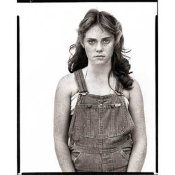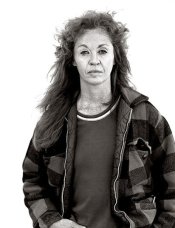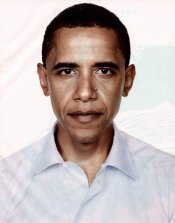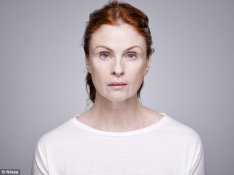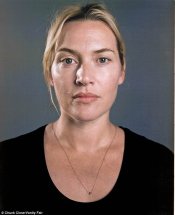blansky
Member
According to some studies humans are capable of 7 facial expressions, namely, anger, sadness, fear, surprise, disgust, contempt and happiness. And that we engage, overall in about 20 variations of them, using them in varying degrees.These expressions are achieved by enacting about 43 various muscles and groups from around the face including forehead, eyes, nasal and mouth. And an interesting fact in all this is that it’s arguably universal and not cultural. Everyone from a lifelong suburbanite in any country to an Amazonian long lost tribesman reads and recognizes them the same. And it’s believed that even babies from the moment they open their eyes can read faces to a certain degree.
Now as a portrait photographer who has been engaged in a number of genres of taking “people pictures” throughout the years, this is something that has been fascinating to me and is probably the reason I got into photography in the first place. How to recognize those expressions, invoke those expressions and how to capture them encompasses my hobby of psychology and my career of photography.
But this thread is more about deadpan. In other words, not using any facial expression at all. And my fascination actually is with people’s response to deadpan pictures. Their willingness and wish to add their own interpretation to what could be described to a “neutral” expression.
In reality expressions is one of two things, an involuntary response, or a well thought out response. For instance, an outburst of a smile vs a fake smile. And although the mouth may be the same in both, the entire expression won’t. Because a real smile uses more than the mouth, it uses the eyes as well and other muscles.
When I first became a questioner of deadpan, was when Avedon, left his NY studio and ventured out into the hinterland and photographed the locals of small towns. In most cases the subject was photographed in high key, with an 8x10 camera while being placed up against a wall, with no expression.
When I saw this after years of photographing people my initial though was, big deal. But when I read glowing reviews from the art world and other places like gallery showings and the book he published like, “he removed the camera and peers deep into the soul of the subject”, I’ll admit I almost threw up. Fucking seriously.
Well to begin with, I don’t think cameras captures peoples’ souls, essence or whatever other hyped up word you can dream up. What they can capture is an ASPECT of a person’s feelings, moods and personality. The rest is just viewer transference.
So I mentally decided to contrast Avedon’s and others deadpan portraits and see what they actually had that a DMV picture, an arrest picture, a passport picture and any other deadpan picture had. When I photographed gangs in the ghetto, actors portfolios, fashion wannabees, and documented people in their environments while in LA I always let people give me what they wanted facially, then I’d say, think of this, or think of that, or give me attitude etc etc. When I photographed family portraits and kids, I also played games with them to get expressions, but that was really just for fun because families don’t really want their kids looking like serial killers, hanging on their walls. So what I usually do is get them to pop the corners of their mouths which affect the eye muscles which removes deadpan. People also don’t want their kids looking miserable, even though they sometimes feel that way.
We have to remember than in the early days of photography people couldn’t “add” facial expression, due to the length of the exposure. So they were always deadpan. And when we see black and white pictures today with deadpan we always seem to add gravitas or importance to it, reading something into it that may or may not be there.
So my question is, why do people look at a particular deadpan picture, rather emotionless and neutral and add their own narrative to it. Is it because the photographer is famous, is it because we know/like/admire the subject, is it because they are using a niftier camera and lens, is it because they are using a certain type of photographic process?
What do you think?
Now as a portrait photographer who has been engaged in a number of genres of taking “people pictures” throughout the years, this is something that has been fascinating to me and is probably the reason I got into photography in the first place. How to recognize those expressions, invoke those expressions and how to capture them encompasses my hobby of psychology and my career of photography.
But this thread is more about deadpan. In other words, not using any facial expression at all. And my fascination actually is with people’s response to deadpan pictures. Their willingness and wish to add their own interpretation to what could be described to a “neutral” expression.
In reality expressions is one of two things, an involuntary response, or a well thought out response. For instance, an outburst of a smile vs a fake smile. And although the mouth may be the same in both, the entire expression won’t. Because a real smile uses more than the mouth, it uses the eyes as well and other muscles.
When I first became a questioner of deadpan, was when Avedon, left his NY studio and ventured out into the hinterland and photographed the locals of small towns. In most cases the subject was photographed in high key, with an 8x10 camera while being placed up against a wall, with no expression.
When I saw this after years of photographing people my initial though was, big deal. But when I read glowing reviews from the art world and other places like gallery showings and the book he published like, “he removed the camera and peers deep into the soul of the subject”, I’ll admit I almost threw up. Fucking seriously.
Well to begin with, I don’t think cameras captures peoples’ souls, essence or whatever other hyped up word you can dream up. What they can capture is an ASPECT of a person’s feelings, moods and personality. The rest is just viewer transference.
So I mentally decided to contrast Avedon’s and others deadpan portraits and see what they actually had that a DMV picture, an arrest picture, a passport picture and any other deadpan picture had. When I photographed gangs in the ghetto, actors portfolios, fashion wannabees, and documented people in their environments while in LA I always let people give me what they wanted facially, then I’d say, think of this, or think of that, or give me attitude etc etc. When I photographed family portraits and kids, I also played games with them to get expressions, but that was really just for fun because families don’t really want their kids looking like serial killers, hanging on their walls. So what I usually do is get them to pop the corners of their mouths which affect the eye muscles which removes deadpan. People also don’t want their kids looking miserable, even though they sometimes feel that way.
We have to remember than in the early days of photography people couldn’t “add” facial expression, due to the length of the exposure. So they were always deadpan. And when we see black and white pictures today with deadpan we always seem to add gravitas or importance to it, reading something into it that may or may not be there.
So my question is, why do people look at a particular deadpan picture, rather emotionless and neutral and add their own narrative to it. Is it because the photographer is famous, is it because we know/like/admire the subject, is it because they are using a niftier camera and lens, is it because they are using a certain type of photographic process?
What do you think?


